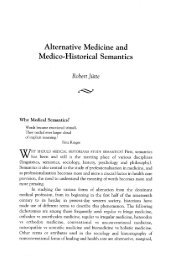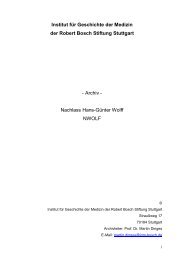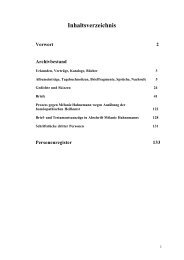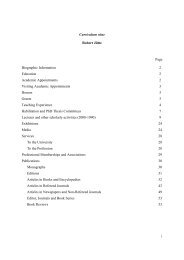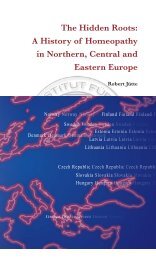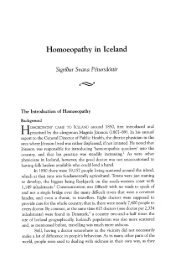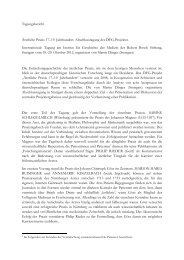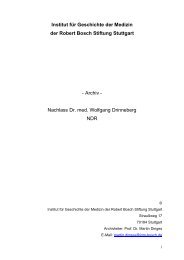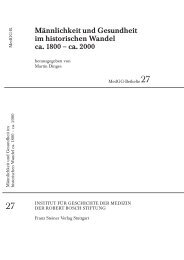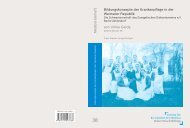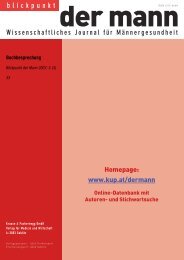pathy Homoeopathy – A Medical Approach and Its History
pathy Homoeopathy – A Medical Approach and Its History
pathy Homoeopathy – A Medical Approach and Its History
You also want an ePaper? Increase the reach of your titles
YUMPU automatically turns print PDFs into web optimized ePapers that Google loves.
04 DISSeMInATIOn AnD DeVeLOPMenT<br />
The Academic Chair Controversy<br />
28 | 29<br />
[41] Lecturers on the further training<br />
course for homoeopathic physicians in<br />
Stuttgart (September 1 to 11, 1926),<br />
from left: Ernst Bastanier, E. Epplée<br />
(Moscow), Heinrich Meng, Hermann<br />
Göhrum, Emil Schlegel, Alfons Stiegele,<br />
in the courtyard of the provisional<br />
hospital in Marienstraße, Stuttgart<br />
© IGM picture library<br />
[42] August Bier (1861<strong>–</strong>1949)<br />
at his departing lecture in Berlin<br />
1932<br />
© IGM picture library<br />
In the 19th century, applications to the parliaments of<br />
the German federal states of Baden, Saxony, Prussia<br />
<strong>and</strong> Württemberg to appoint homoeopathic chairs at<br />
the universities were rejected. Nevertheless it was<br />
possible up to the middle of the 19th century for<br />
individual lecturers <strong>and</strong> professors in Munich <strong>and</strong><br />
Leipzig to offer homoeo<strong>pathy</strong> lectures.<br />
Around 1900 several local parliaments began again to<br />
look into the question. But only in 1928 the Prussian<br />
parliament agreed after long negotiations to grant a<br />
teaching assignment at the Friedrich Wilhelm University<br />
in Berlin. The physician Ernst Bastanier (1870<strong>–</strong>1953)<br />
took on this task <strong>and</strong> also became leader of the<br />
homoeopathic university polyclinic from 1929 [41].<br />
Homoeo<strong>pathy</strong> <strong>and</strong> national Socialism<br />
[43] 12th International Congress<br />
of the Homoeo pathic League,<br />
Berlin, August 9, 1937<br />
© Ullstein Bilderdienst, Berlin<br />
After seizing power the Nazis began to adapt<br />
the health system to their own ideology. In 1935,<br />
the leader of the Reich’s chamber of physicians,<br />
Dr Gerhard Wagner (1888<strong>–</strong>1939), founded a<br />
professional alliance for a new German medicine,<br />
which, next to various naturo pathic methods,<br />
included also homoeo<strong>pathy</strong>.<br />
Many homoeopaths saw this as an opportunity<br />
to gain the long awaited public recognition. Like<br />
the representatives of other medical professional<br />
groups, homoeopathic physicians <strong>and</strong> lay healers<br />
allowed themselves to be taken in by the Nazis<br />
<strong>and</strong> showed them selves sympathetic to them [43].





